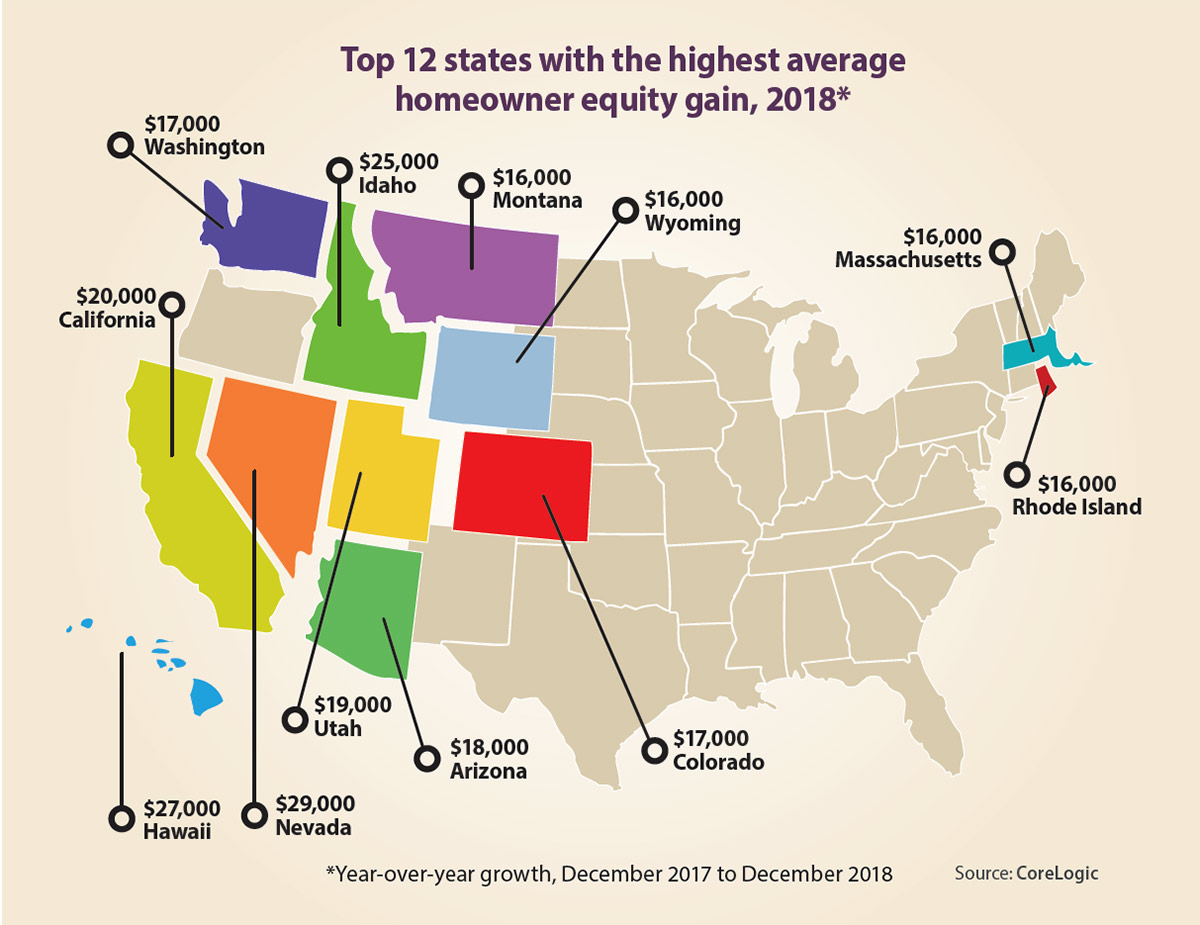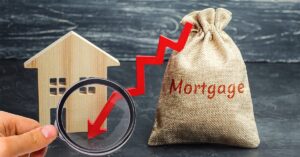Home-improvement spending has increased steadily over the last nine years. By the fourth quarter of 2018, spending had reached a new inflation-adjusted high. And the two main drivers of home-remodeling and repair expenditures are existing-home sales and home equity growth.
Existing-home sales have been an important driver of home-improvement spending as new homeowners often remodel as part of their purchase and relocation. The rebound in existing-home sales, from the post-recession low in 2010 through 2017, has added to steady growth in remodeling and repair expenditures. Although we expect sales of existing homes in 2019 to stay relatively flat in comparison to 2018, rising costs for building materials and labor are expected to add to the dollar volume of home-improvement spending that will come from home sales during the remainder of this year.
The other important driver of renovation spending is long-time homeowners, who often turn to their accumulated home equity to finance their expenditures. Added together across all U.S. homeowners, home equity has grown by about $9 trillion since its low point during the Great Recession to a whopping $15.5 trillion at the end of 2018. And much of the growth in home equity during the past several years has been attributable to home-price growth.
CoreLogic’s home equity report from this past fourth quarter found that the average homeowner gained $9,700 in home equity during 2018. The amounts gained varied widely by location, as home equity was affected by the value of homes, new mortgage debt and appreciation rates by locale. On average, homeowners in Hawaii, Idaho and Nevada had equity growth of $25,000 or more this past year, reflecting either low mortgage debt or rapid appreciation. In contrast, the average homeowner in Connecticut, Louisiana and North Dakota experienced an equity decline in 2018 due to mortgage-debt growth or declining prices.
Using CoreLogic’s public-records data, we also have found that the median homeowner stays in their home for 10 years, an increase of four years since 2007. There are housing, economic and demographic factors that have contributed to this increase. With the crash in home values from 2007 through 2010, many homeowners elected to postpone a move until their home value recovered. Today, the average homeowner has a mortgage rate of about 3.75 percent, which is below the current market rate and tends to provide a disincentive to sell and take on a higher-cost purchase loan. Demographics play a role, too: The median age for a head of household in 2017 was 57, which is typically a low-mobility time for homeowners.
Homeowners often finance small remodeling projects by drawing down savings or liquidating some of their financial assets. For larger projects, owners tend to turn to first-lien, cash-out refinances or second-lien home equity loans. Although the Tax Cut and Jobs Act of 2017 eliminated the interest rate deduction for many second mortgages, it preserved it for secondary liens when the proceeds are used for home-improvement purposes, and the sum of the first and second liens is $750,000 or less for married couples (or $375,000 for individual filers). CoreLogic data shows that the dollar volume of newly originated home equity lines of credit (HELOCs) more than doubled from 2012 to 2018.
Homeowners who stay in their home longer and have substantial equity growth are more likely to spend on upgrades and remodels. Add to this the remodeling costs associated with an existing-home purchase, as well as rising material and labor costs, and these forces have spurred growth in home-improvement spending to record levels in 2018. This spending is expected to rise further in 2019, albeit at a slower pace, according to the Joint Center for Housing Studies at Harvard University, which has forecast a 5.1 percent increase in remodeling and repair spending this year.
Author
-

Frank E. Nothaft is chief economist for CoreLogic, America’s largest provider of advanced property and ownership information, analytics and data-enabled services. He leads the economics team responsible for analysis, commentary and forecasting trends in global real estate, insurance and mortgage markets. Before joining CoreLogic, Nothaft served as chief economist for Freddie Mac. Prior to Freddie Mac, he was an economist with the Board of Governors of the Federal Reserve System.
View all posts






